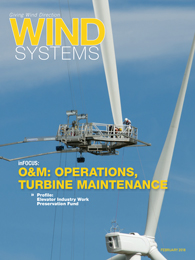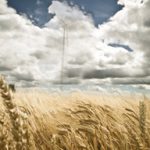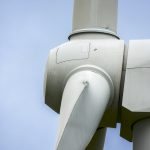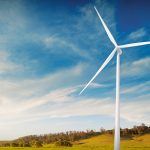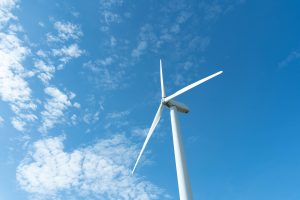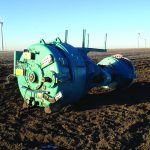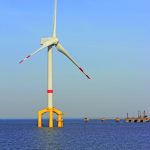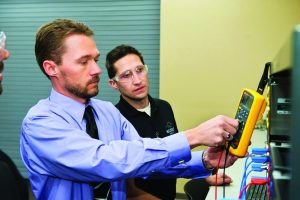(Editor’s note: This article on torque loading is presented in two parts. Part 1 on how drivetrain components are important in analyzing component performance appeared in the January issue of Wind Systems.)
The IEC standard 61400-4 (2012) is the latest standard for wind-turbine drivetrains. Although AGMA/AWEA 6006-A03 was reaffirmed in 2016, 61400-4 is one of the most used industry standards.
61400-4 expands on previous standards, and includes new gear-failure modes to be taken into consideration for micropitting and subsurface initiated fatigue. One notable change is the requirement to inspect 100 percent of manufactured gears for surface temper, rather than only a sample.
Minor changes also were made to gear rating safety factors. Three goals were established for the inclusion of dynamic drivetrain analysis:
- Verify and confirm the modeling of the gearbox in the WTG aero-elastic model.
- Verify the occurrence of gearbox-specific loads due to dynamic amplification.
- Assess influence of boundary conditions on the internal gearbox loading.
The standard includes minimum requirements for dynamic drivetrain analysis documentation and validation from field or dynamometer testing. Gearbox testing requirements are more stringent. The scope of the test campaign is agreed upon by the gearbox manufacturer, the wind turbine manufacturer, the bearing manufacturer, and the certification body.
The new standard also requires certain parameters to be measured while defining minimum run times for each defined load step. A “robustness test” which mentions “elevated loads” is required, but the details are left to manufacturers. Field-testing also is a new requirement for gearbox testing. It requires certain parameters to be measured during selected events such as high winds, shutdown events, emergency stops, and low voltage ride-through.
For bearing rating calculations, 61400-4 introduces several new and well-defined design requirements. A substantial portion of the gearbox design section of the standard focuses on bearing design and reliability. The standard states the steel quality of bearings shall meet ISO 683 requirements with regards to chemical composition, steel cleanliness, steelmaking process, heat-treatment and micro-structure.
This is an important improvement over previous standards. ISO 281:2007, the calculation standard most used for bearings, requires only steel bearings of good quality. A definition for good quality, however, is missing.
The updated standard requires bearings to be rated using the internal load distribution from detailed models such as ISO/TS 16281. The previous version did not specifically mention how to account for the internal load distribution. This may have an impact on accurately predicting the life of planet bearings, which are subject to constant tilting moments in the 3-point design.
ISO/TS 16281 requires extreme design loads to be specified, and maximum load reversals and accelerations should be included in statistical summaries and identified separately with supporting time series where possible. The standard recommends using:
- Rainflow counting.
- Load revolution distribution.
- Load duration distribution.
- Extreme load matrices to include transient loads into the design load cases.
While these tools provide well-accepted processes for documenting all load cases, they are still fatigue based (duration sensitive), and likely to be under-represented when calculated over the estimated turbine life.
Standards Have Limits
Ultimately, it is difficult for the standards to adequately quantify all the conditions in a highly variable, dynamic loaded wind turbine. The standards can identify the need to better quantify loading. A methodology used for this is shown in ANSI/ABMA Standards, which allows bearing manufacturers to adjust the theoretical L10 life with life-adjustment factors to try to capture non-rolling contact fatigue failures.
These factors take into account the desired life, the specifics of the bearing design, and the actual application’s conditions. Life adjustment factor A1 is reliability, allowing for a tighter than 10 percent tolerance on failure in the design life. Material factor is the A2 adjustment, allowing for differences in material, melting, and processing for the desired performance. The final adjustment factor is application or A3. This takes into account lubrication, misalignment, temperature, load-zone factors, low loads, and more.
For wind, this A3 factor may be the most difficult factor to consider since the variables are so numerous and are hard to model or test. The A3 factor is what brings the results of the damaging transient loads into the equation. Unfortunately, these are not well defined in the load cases and must be estimated in the A3 factor.
It is impossible to predict the amplitude and frequency of transient loads on individual turbines; farm-to-farm variation can be significant. The standards leave it up to turbine manufacturers to make the decision of how much safety factor are built into their systems. It is not simply a case of making the product cheaper; it is a factor of design compromise. They must balance building the lowest cost turbine (to gain a lower cost of energy) with the most reliable production possible. Standards are not likely to ever “solve” the issues of premature failures. Other solutions must be brought in to help extend the life of turbine drivetrains. They might include:
- Surface finishes above the standards.
- Torque control solutions.
- Better oil and filtration.
- Solutions to better manage the damage of transient loads.
In conclusion, the continuing problem with definition and standardization of severe transient loads is truly a work in progress for the industry. Much more needs to be done in order to quantify and calculate the damage caused by these short-term but potentially life-limiting conditions. For more details on this topic, look for our white paper to be released in early 2018.
Sources
- AGMA/AWEA. (1996). Recommended Practices for Design and Specification of Gearboxes for Wind Turbine Generator Systems. AGMA/AWEA 921-A97
- ANSI/AGMA/AWEA. (2003). Standard for Design and Specification of Gearboxes for Wind Turbines. ANSI/AGMA/AWEA 6006-A03
- IEC. (2012). Wind turbines – Part 4: Design requirements for wind turbine gearboxes. IEC standard 61400-4:2012
- McNiff, B., Errichello, R., (1997) New guidelines promise reliable wind-Turbine gearboxes: What they mandate. http://www.machinedesign.com/Sustainable-Engineering/New-Guidelines-Promise-Reliable-Wind-Turbine-Gearboxes-What-They-Mandate. [Accessed 8 Dec. 2017].
- McNiff, B., Musial, W., Errichello, R., (1990) Variations in Fatigue Life for Different Wind Turbine Braking Strategies SERI/TP-257-3984. Available at: https://www.nrel.gov/docs/legosti/old/3984.pdf [Accessed 8 Dec. 2017].
- Nappi, G., Introduction of the new gearbox design standard for wind turbine generators: a gap analysis between IEC 61400-4 and ISO 81400-4 http://proceedings.ewea.org/annual2014/conference/posters/PO_036_EWEApresentation2014.pdf
- Oyague, F. (2009). Gearbox Modeling and Load Simulation of a Baseline 750-kW Wind Turbine Using State-of-the-Art Simulation Codes. [online] Nrel.gov. Available at: https://www.nrel.gov/docs/fy09osti/41160.pdf [Accessed 8 Dec. 2017].
















